Cease and Desist Trademark Letter Template Guide
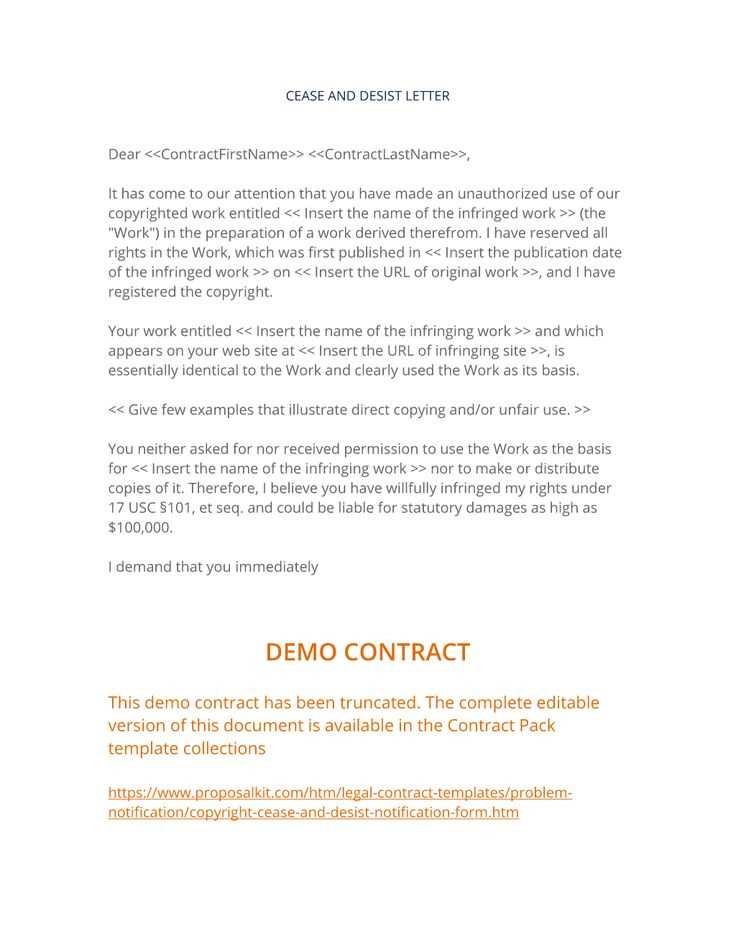
When a business or individual believes their intellectual property is being improperly used, a formal communication is often required to demand cessation of such actions. This document serves as a legal tool to protect ownership rights by addressing violations in a direct manner. The aim is to inform the recipient of their infringement while urging them to stop any further misuse.
Essential Elements of a Formal Communication
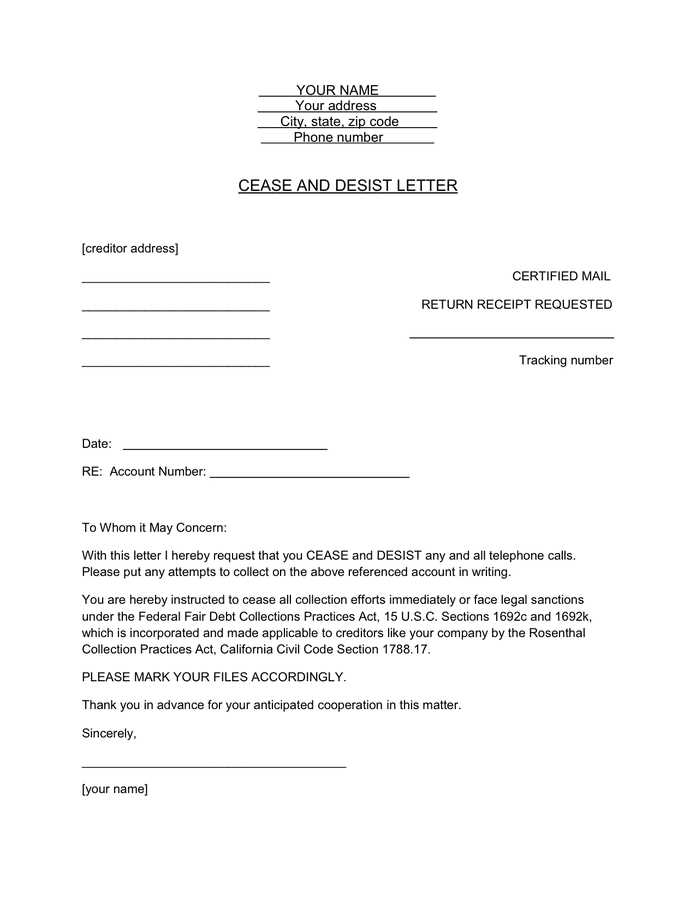
A well-crafted document includes several key sections, each serving a distinct purpose in ensuring the message is clear and enforceable.
- Identification of the Issue: Specify the nature of the violation and explain how the infringement is occurring.
- Legal Basis: Reference the specific laws or rights being violated to establish authority.
- Demand for Action: Clearly state the expected actions, such as discontinuing use or ceasing further distribution.
- Timeframe for Compliance: Indicate a reasonable period for the recipient to comply with the request.
- Consequences of Non-Compliance: Outline the potential legal actions that may be taken if the issue is not resolved.
Customizing Your Request
Each situation is unique, so it’s essential to tailor your communication to the specific details of the case. Make sure to adapt the language based on the severity of the situation, the relationship with the recipient, and any relevant agreements. A personalized approach will ensure your message is taken seriously.
Avoiding Common Pitfalls
When drafting such documents, certain mistakes can weaken their effectiveness. These include:
- Being vague about the infringement or expectations.
- Failing to reference relevant laws or rights clearly.
- Not providing a reasonable deadline for compliance.
- Using overly aggressive language that may cause unnecessary conflict.
After Sending the Communication
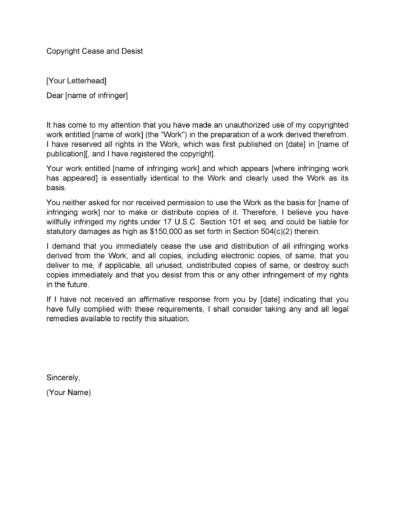
Once the document is sent, the next steps depend on the recipient’s response. If they comply, ensure the violation is indeed halted and monitor for any further issues. If they fail to respond or deny the claim, legal action may be necessary. Consult with an attorney to determine the best course of action for protecting your interests.
Formal Communication to Halt Unauthorized Use
Infringements on intellectual property often require a clear, formal notice to address the issue and demand corrective action. This type of communication helps protect ownership rights and establishes a legal basis for requesting cessation of the infringement. It is vital to include specific information and clear demands to ensure the recipient understands the situation and the necessary steps to resolve it.
Why You Need a Formal Notice
A well-crafted notice can prevent further misuse of intellectual property by outlining the violation and urging immediate action. By sending a clear demand to stop the unauthorized actions, you assert your rights and provide the recipient with the opportunity to comply before any legal actions are taken. This step can often resolve the situation without escalating to formal litigation.
Key Elements of a Formal Communication
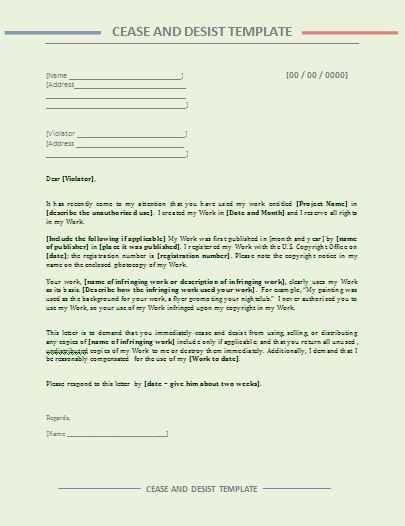
Effective communications should include these crucial components:
- Violation Details: Clearly describe how and why the recipient’s actions are infringing upon your rights.
- Legal Grounds: Reference the applicable laws or regulations that support your claim.
- Required Action: Specify the actions you want the recipient to take, such as stopping the unauthorized use immediately.
- Compliance Deadline: Set a reasonable timeframe within which the recipient must comply with your request.
- Consequences: Explain the potential legal steps you will take if the violation continues.
How to Tailor Your Request
Customization is key. Ensure the notice is specific to your situation. Modify the tone, language, and details to match the severity of the issue. A professional and respectful tone can increase the likelihood of cooperation, while clear expectations will avoid confusion or delays in resolution.
Common Mistakes to Avoid
While drafting your communication, keep these common pitfalls in mind:
- Ambiguous language: Avoid vague statements that may not clearly explain the violation or expected actions.
- Unclear legal references: Ensure the legal basis for your claim is explicitly stated and understandable.
- Unreasonable demands: Make sure the actions you request are achievable within a reasonable timeframe.
- Overly harsh tone: Being too aggressive can backfire and lead to unnecessary conflicts.
Sending the Formal Notice
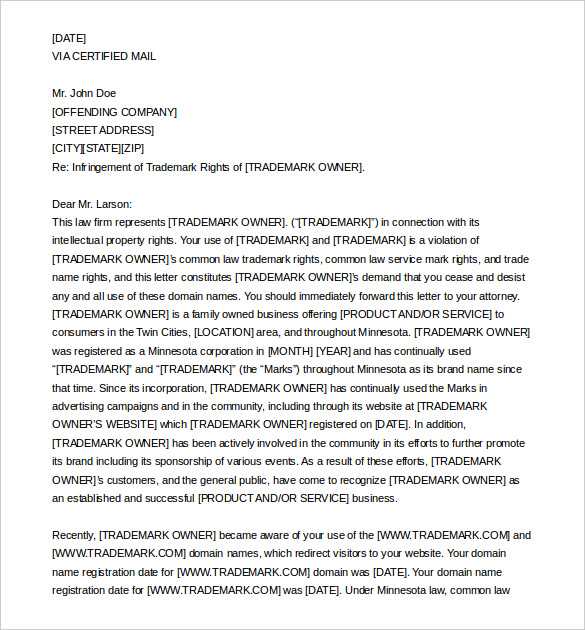
Once the document is finalized, send it through a secure and traceable method, such as registered mail or email with delivery confirmation. This ensures you have a record of the communication being sent and received.
Post-Sending Actions
After sending the notice, monitor the recipient’s response. If they comply, verify that the infringement has ceased. If they ignore or deny the claim, consult with legal counsel to explore further actions, which may include initiating a formal lawsuit or seeking mediation.